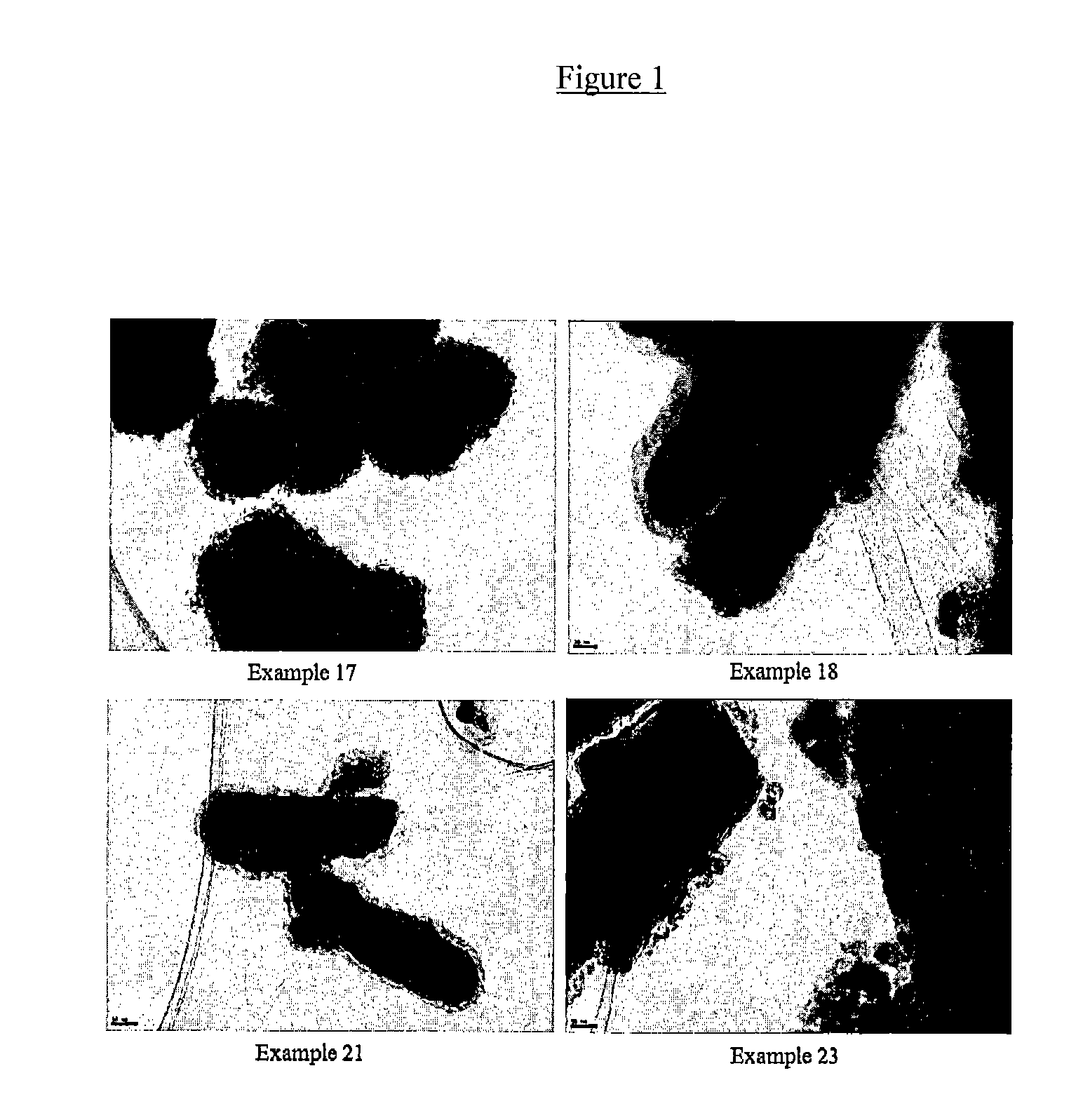Core-shell composite inorganic metal oxides and method of preparing for prevention of thermal oxidative degradation in polymer and resin compositions
a technology of inorganic metal oxides and composite materials, applied in the field of core-shell composite inorganic metal oxides, can solve the problems of reducing mechanical properties from thermal oxidation degradation, affecting the production efficiency of raw materials, and unable to achieve the desired mechanical strength and the desired benefit of additives at the same tim
- Summary
- Abstract
- Description
- Claims
- Application Information
AI Technical Summary
Benefits of technology
Problems solved by technology
Method used
Image
Examples
example 1
[0047]Add 500 g copper chromite spinel BK30C965 to 1674 mL DI H2O. Mix with rapid agitation. Heat to 100° C. Raise the pH of the slurry to 9.5 using 3M NaOH. Add 304 g of 29% sodium silicate solution to 100 mL DI H2O. Add 20 g concentrated sulfuric acid to 300 mL DI H2O. Simultaneously add solutions to heated agitating slurry at 1.2 g / min. Continue heating and stirring for one hour post addition. Stir 24 hours with no heat. Adjust pH to 7.5 using 0.5M sulfuric acid. Filter slurry, wash using DI H2O, and dry in 105° C. oven.
example 2
[0048]Add 186 g Example 1 product to 1014 mL DI H2O. Mix with rapid agitation. Heat to 100° C. Raise the pH of the slurry to 9.5 using 3M NaOH. Add 113 g of 29% sodium silicate solution to 100 mL DI H2O. Add 15 g concentrated sulfuric acid to 240 mL DI H2O. Simultaneously add solutions to heated agitating slurry at 1.2 g / min. Continue heating and stirring for one hour post addition. Stir 24 hours with no heat. Adjust pH to 7.5 using 0.5M sulfuric acid. Filter slurry, wash using DI H2O, and dry in 105° C. oven.
example 3
[0049]Add 648 g copper (I) oxide slurry to 610 mL DI H2O (overall 16-18% solids). Mix with rapid agitation. Heat to 100° C. Adjust pH of slurry to 9.5-10 using 3M NaOH. Add 228 g of 29% sodium silicate solution to 815 mL DI H2O. Add 28.3 g concentrated sulfuric acid to 965 mL DI H2O. Simultaneously add solutions to heated agitating slurry. Addition rates will vary and the pH must remain between 9.5-10.5. Continue heating and stirring for one hour post addition. Stir 24 hours with no heat. Filter slurry, wash using DI H2O, and dry in 105° C. oven.
PUM
| Property | Measurement | Unit |
|---|---|---|
| mean particle size | aaaaa | aaaaa |
| thickness | aaaaa | aaaaa |
| diameter | aaaaa | aaaaa |
Abstract
Description
Claims
Application Information
 Login to View More
Login to View More - R&D
- Intellectual Property
- Life Sciences
- Materials
- Tech Scout
- Unparalleled Data Quality
- Higher Quality Content
- 60% Fewer Hallucinations
Browse by: Latest US Patents, China's latest patents, Technical Efficacy Thesaurus, Application Domain, Technology Topic, Popular Technical Reports.
© 2025 PatSnap. All rights reserved.Legal|Privacy policy|Modern Slavery Act Transparency Statement|Sitemap|About US| Contact US: help@patsnap.com

